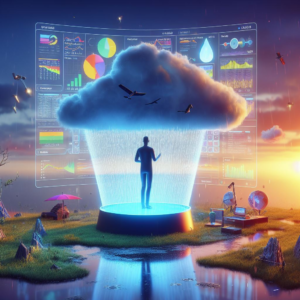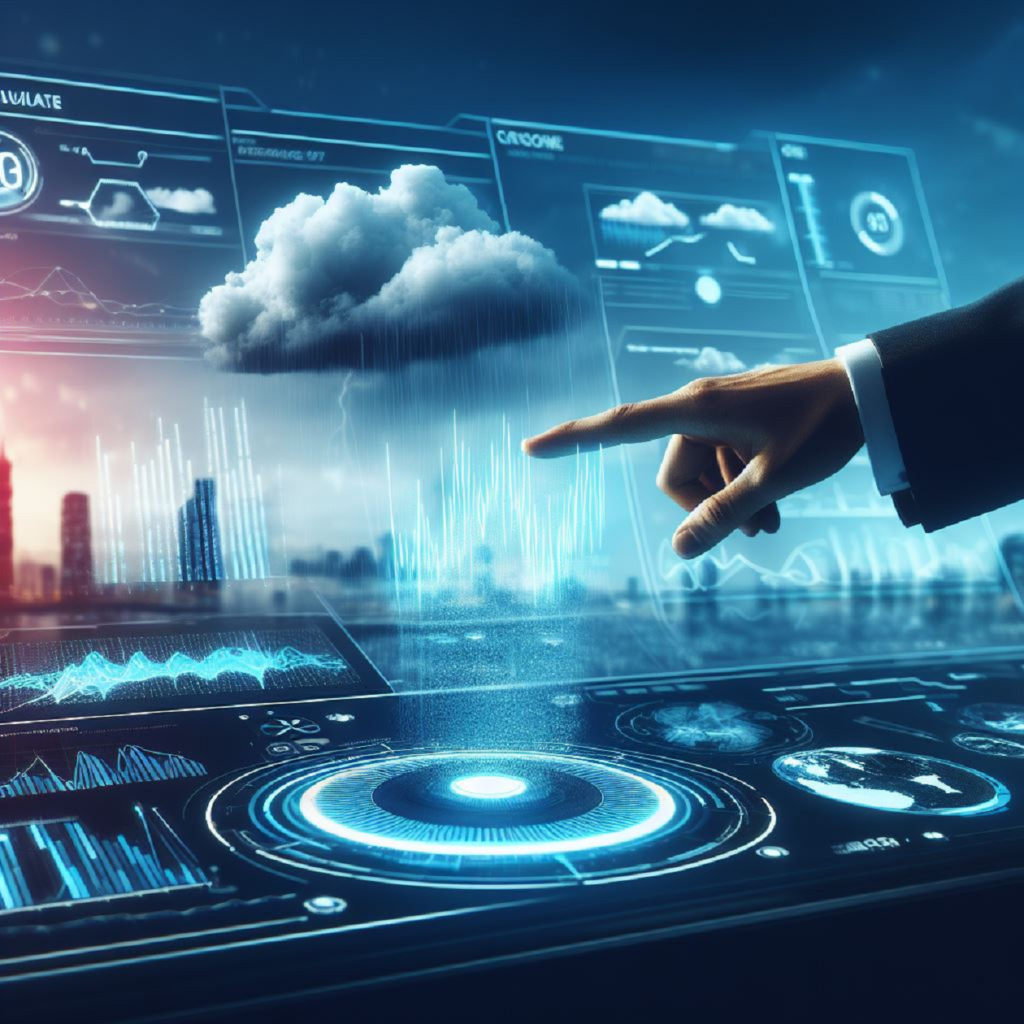GraphCast is a cutting-edge machine learning model developed by Google’s DeepMind AI. Machine learning is a branch of artificial intelligence that focuses on developing algorithms and models to learn from and make predictions or decisions based on data. It is specifically designed to analyze and predict weather patterns.
Traditional weather prediction methods rely on numerical models that simulate the Earth’s atmosphere and use mathematical equations to predict weather conditions. These models require extensive computational power and are based on simplifications and assumptions about the atmosphere.
GraphCast, on the other hand, utilizes machine learning techniques to analyze vast amounts of data and identify complex patterns that traditional models may not capture. By leveraging the power of machine learning, it can provide more accurate and reliable weather forecasts.
Supercomputers are high-performance computers capable of processing large amounts of data and performing complex calculations. In weather forecasting, supercomputers have been the go-to tool for running numerical models and predicting weather patterns. It has surpassed even the capabilities of top-tier supercomputers in terms of accuracy and performance.
The emergence of GraphCast as a game-changer in weather forecasting signifies a seismic shift in how we understand and anticipate weather patterns. Machine learning models like GraphCast have the potential to revolutionize the field of weather forecasting by providing more accurate and timely predictions. This development could have significant implications for various sectors, including agriculture, transportation, and disaster management, where precise weather forecasts are crucial for decision-making.
Index of Contents
ToggleUnveiling GraphCast: A Meteorological Marvel

GraphCast is an advanced technology developed by Google’s DeepMind that has revolutionized the field of weather prediction. It has been trained on precisely 40 years’ worth of meteorological data, including information from various sources such as weather stations, satellite images, and radar records. This extensive dataset gives GraphCast a comprehensive understanding of weather patterns and trends.
The AI-powered system can generate highly accurate weather forecasts in less than a minute, significantly improving compared to traditional methods that often take longer to produce predictions. One notable achievement of GraphCast was its accurate prediction of the path of Hurricane Lee in September.
The AI system was able to forecast the hurricane’s landfall in Nova Scotia a remarkable nine days before traditional methods could detect it. This early prediction is a testament to the predictive prowess of GraphCast and its ability to provide valuable information well before severe weather events.
The accuracy and speed of GraphCast’s forecasts have the potential to significantly enhance our ability to prepare for and mitigate the impact of severe weather events. By providing early warnings and precise predictions, GraphCast can help authorities and individuals take necessary precautions and make informed decisions to protect lives and property.
This technology can improve disaster response strategies, evacuation plans, and resource allocation in areas prone to severe weather conditions. Overall, GraphCast represents a significant leap forward in weather prediction, offering the promise of more effective and efficient measures to deal with the challenges posed by extreme weather events.
Outperforming the Titans: GraphCast vs. Supercomputers
The paper in the journal Science discusses validating a weather forecasting system called GraphCast, comparing it to the European Medium Range Weather Forecasting Model (EMRWFM). It outperforms the EMRWFM in various metrics and demonstrates its ability to predict temperature, air pressure, wind speed, humidity, and atmosphere levels.
The scientific paper validates the superiority of GraphCast over the EMRWFM. The EMRWFM is considered one of the most advanced forecasting systems, making this validation significant. It outperformed the EMRWFM in 90% of the 1,380 tested metrics. These metrics likely include various aspects of weather prediction, such as accuracy, precision, and reliability.
GraphCast outperformed the EMRWFM in such a high percentage of metrics, suggesting it is a more effective and reliable forecasting system. The ability to accurately predict these variables is crucial for weather forecasting, as they directly impact weather conditions and can help in making informed decisions.
Matthew Chantry, the machine-learning coordinator at ECMWF, expressed astonishment at the rapid progress of weather forecasting systems. This recognition highlights the significant advancements that have been made in weather forecasting in recent years. Chantry acknowledges that these advancements have far exceeded expectations from just two years ago, indicating the rapid pace of improvement in the field. This recognition from an expert in the field further emphasizes the importance and credibility of the scientific paper’s findings.
The Turning Point in Weather Forecasting
GraphCast is a system developed by Google DeepMind that has had a transformative impact on weather prediction. Pushmeet Kohli, the vice president of research at Google DeepMind, highlighted the accuracy and speed of GraphCast compared to traditional systems.GraphCast is accurate and incredibly fast, able to make predictions in under a minute. The accuracy and speed of GraphCast make it an exciting development in weather prediction.
Remy Lam from Google DeepMind emphasized that AI models like GraphCast represent a significant leap forward in weather prediction. However, Lam also stressed the importance of combining AI’s capabilities with data gathered through traditional approaches. Traditional supercomputers still play a crucial role in weather prediction and should be used with AI models like GraphCast.The combination of AI and traditional approaches helps in building robust forecasting models.
Revolutionizing Preparedness and Response
Google’s DeepMind AI has significant implications in the field of weather forecasting. The AI technology can predict weather patterns up to ten days in advance. This advancement in weather prediction enhances our understanding of meteorology and has broader implications in other areas.
The ability to predict weather patterns in advance revolutionizes preparedness and response to extreme weather events. With accurate and timely weather predictions, authorities and individuals can take necessary precautions and plan accordingly to minimize the impact of extreme weather events. This can include actions such as evacuations, resource allocation, and emergency response planning.
The use of AI in weather forecasting has the potential to save lives and reduce the damage caused by severe weather events. The accuracy and timeliness of weather predictions can help in better decision-making and resource management during extreme weather situations. Integrating AI with traditional weather forecasting methods promises even more accurate and reliable predictions.
The synergy between AI and traditional methods can lead to a more comprehensive understanding of weather patterns and climate science. This can further contribute to developing effective climate change mitigation and adaptation strategies. The advancements in AI technology and its application in weather forecasting are reshaping our approach to climate science. As technology advances, AI’s potential to further improve weather predictions and enhance our understanding of meteorology is immense.
Embracing the Future
Google’s DeepMind AI is an advanced artificial intelligence system developed by Google. It has made significant advancements in various fields, including meteorology. The GraphCast model is a specific model developed by DeepMind for meteorological forecasting. It combines artificial intelligence techniques with traditional forecasting methods. Using the GraphCast model represents a turning point in meteorology, indicating a significant shift in how weather patterns are understood and predicted.
The fusion of artificial intelligence with traditional forecasting methods refers to integrating advanced AI techniques with the existing methods used by meteorologists to predict weather patterns. Traditional forecasting methods typically involve analyzing historical weather data, using mathematical models, and considering atmospheric conditions to make predictions. By incorporating artificial intelligence, which can process vast amounts of data and identify complex patterns, the accuracy and effectiveness of weather forecasting can be significantly enhanced.
Integrating AI with traditional forecasting methods opens up new possibilities in meteorology algorithms that can analyze large datasets from various sources, such as satellite imagery, weather stations, and climate models, to identify patterns and correlations that human forecasters may need help to detect. This enhanced understanding of weather patterns can lead to more accurate predictions, allowing for better preparation and response to weather events.
The ultimate goal of combining AI with traditional forecasting methods is to improve the accuracy and timeliness of weather forecasts. Accurate forecasts provide valuable information for various sectors, including agriculture, transportation, and emergency management, enabling them to make informed decisions and mitigate potential risks. Timely forecasts are crucial for warning of severe weather events, such as hurricanes or tornadoes, allowing people to take necessary precautions and potentially save lives.
The complexities of our ever-changing climate pose significant challenges for meteorologists. Climate change has led to more frequent and intense weather events, making it even more critical to have accurate and timely forecasts. By leveraging the power of AI, meteorologists can better understand the complex interactions between different climate factors and make more reliable predictions about future weather patterns. This knowledge can help society adapt to the changing climate and develop strategies to mitigate its impacts.



